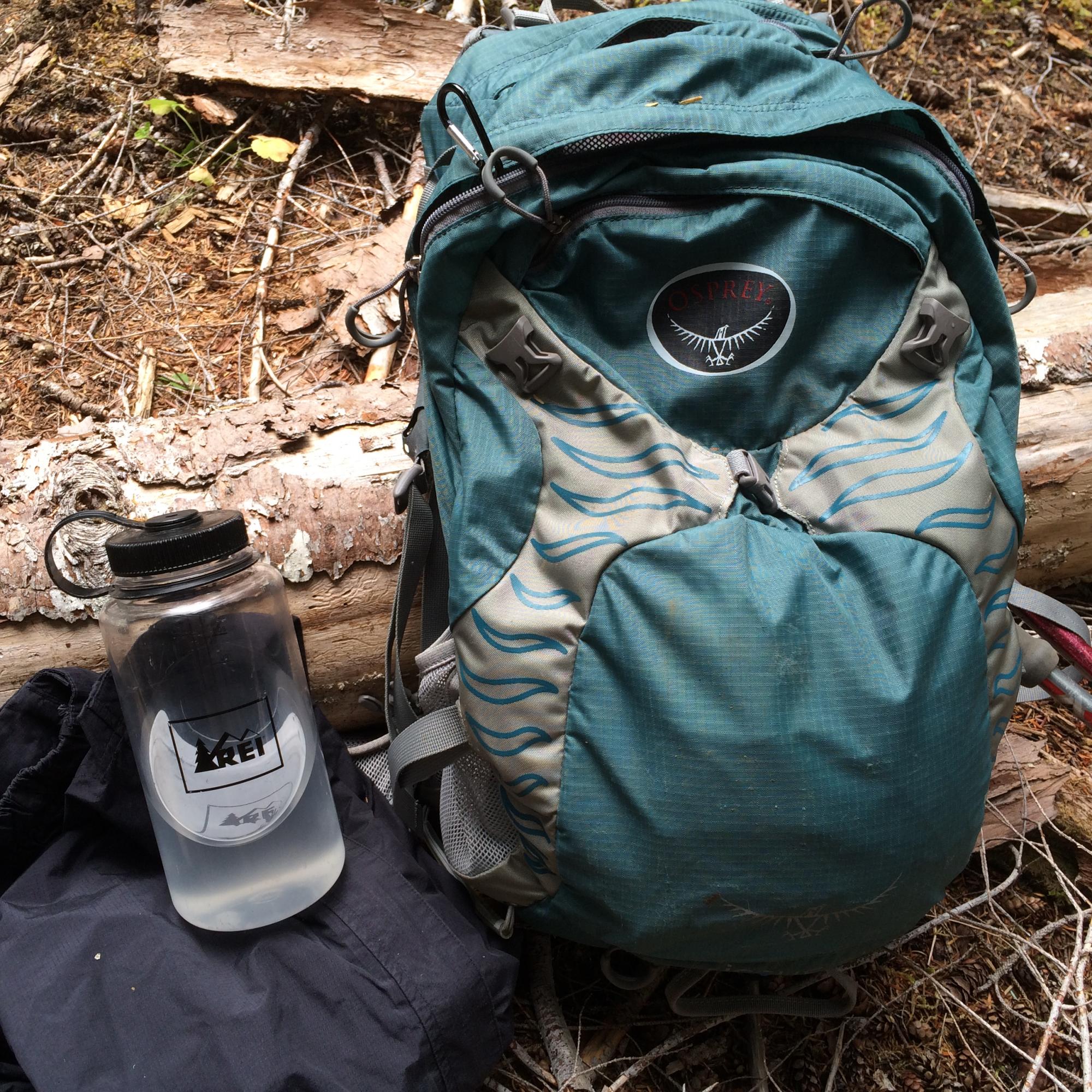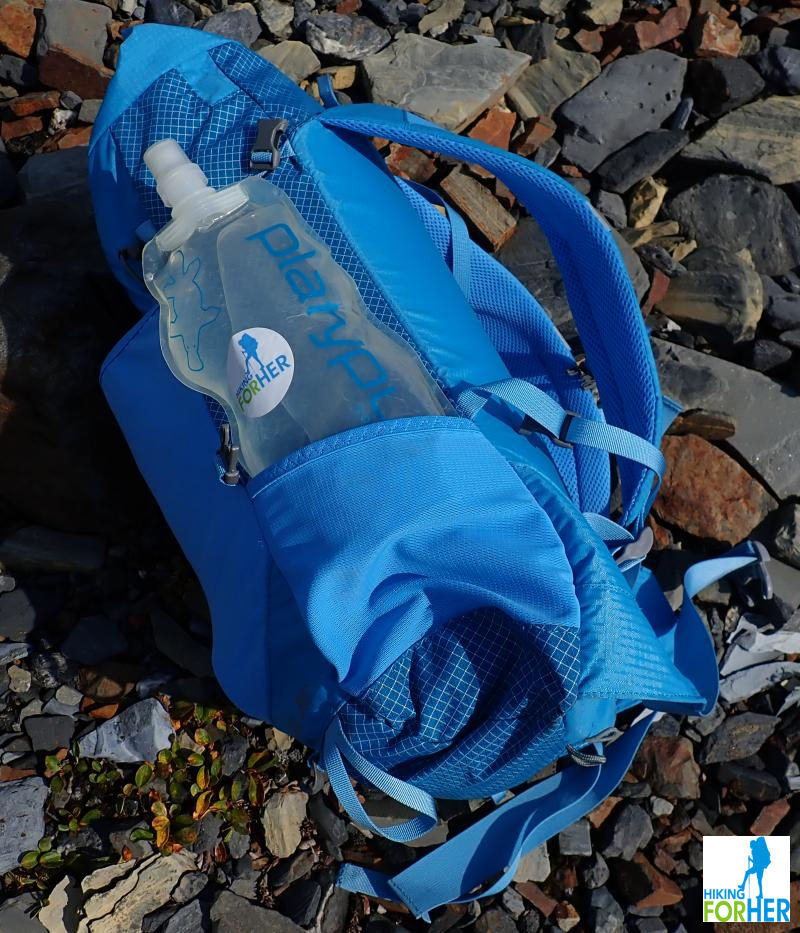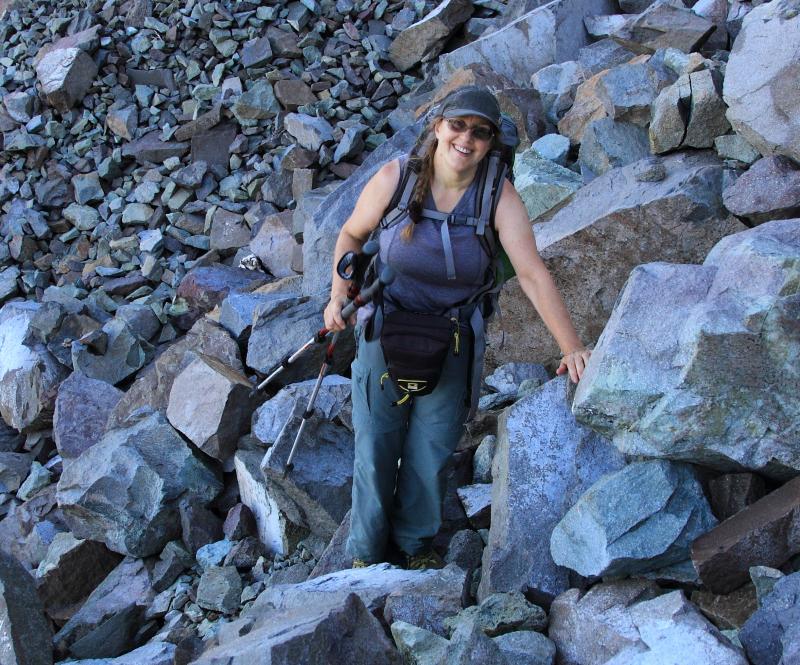
Best Hiking Water Bottles
To Stay Hydrated On A Hike
By Diane Spicer
Hiking water bottles: when did it all get so complicated?
I logged onto an outdoor gear website recently, and just for fun, typed in the innocent words "water bottle".
- Up popped 12 pages, each containing 20 items.
I have to admit, I'm puzzled.
The basic issue here is simply hydration for the trillions of cells in your hard working hiking body.
So why so much fuss over how to get water from a containment unit called a bottle, to your lips??
Let's take a look at some of the hidden issues in choosing the best hiking water bottle for your hiking style.
Beware of BPA
Plastic water bottles have been around for a long time.
In fact, as demonstrated by my small Internet search above, there are plastic water bottles galore.
However, you want them to be free of a chemical called bisphenol (BPA).
Why is a hiking water bottle that is BPA free so important? That link explains.
Long story short: Current research suggests it can cause a lot of trouble.
- Here's a recent research report linking BPA ingestion by moms to toddler developmental problems.
So go BPA-free with your water bottles. It's not hard to do with reputable brands.
- Beware plastic bargain brands that are super cheap and don't state "BPA free" on the label.
Your options in hiking water bottles
Plastic water bottles used on a hiking trail were the only choice when I began hiking several decades ago. (true story)
- Most of us ancient backpackers used empty soda bottles over and over again until they either fell apart or starting tasting funny (NOT recommended hiking best practices!!).
When shopping for lightweight plastic water bottles these days, you have options beyond bottles.
- You could carry your hiking water in bladders.
- You can carry a Lifestraw bottle with a built in filtration unit: insta-pure water! Read my review here.
Hiking water bottles are also made of stainless steel or aluminum, either single wall or double walled for insulation.
- Here's the Lifestraw stainless steel version.
Strong points of metal bottles for hiking
- Inert, so won't react with your electrolytes or lemonade to produce a weird, possibly hazardous, taste.
- Nearly indestructible, so dropping them down a rocky chute won't be the end of them.
- Come in a dazzling array of color choices, and have interchangeable lids for water delivery: flip up straws, twist off lids, twist or pop open lids and more.
- You can't accidentally slice them open on a sharp rock.
- They don't disintegrate from UV ray exposure (sunlight) or extreme temperatures after several uses, as with plastic bottles.
Drawbacks of metal hiking water bottles
- A bit heavier in your backpack compared with plastic. When weight is your top consideration, go with plastic.
- They can be dented when dropped.
- On cold winter days it's a bit unpleasant to bring an ice cold metal water bottle up to the lips.
- The duct tape I wind around each bottle (part of my "be prepared" ten essentials strategy) sometimes gets tightly stuck to the metal, especially if it has gone through temperature extremes.
Best hiking water bottles
All of which begs the question:
Which are the best hiking water bottles?
Best for what?
And for whom?
It depends upon the hiker, no surprise there.
But I'll put in my 2 cents worth here, and welcome any debate on the matter.
I carry stainless steel bottles, and I don't begrudge the slightly heavier but sturdier (compared with plastic) design.
Why did I switch from my Nalgene plastic bottles?
They were over 2 decades old, scratched and battered.
And when I read about the BPA scare, that motivated me to make the switch.
- Nalgene has reformulated their water bottles to eliminate BPA, but if you're still carrying around old ones, toss them in the recycle bin. Go ahead, I'll wait here for you to get back.
So after a little research, I bought some metal bottles, and have not regretted my decision.
Check out KleanKanteen.
Another metal water bottle choice
You have another good option in metal hiking water bottles: Hydro Flasks.
These bottles have some advantages over the Klean Kanteens, while sharing many of their strengths for hiking hydration.
Specifically, they are double walled, so there's no condensation when temperature extremes occur in one day.
And they come in some mighty attractive colors!
Check them out at REI Co-op here. Or on Amazon.
And note that you can use the larger ones for car camping or a picnic, too.
For specifics, read these Hiking For Her Hydro Flask reviews:
When to use plastic hiking bottles
Frankly, plastic spooks me.
We are exposed to so much of it, in our living environment, our food supply, our health care. Time for a break!
Stainless steel is inert, it's durable, and it's standing up to all of the punishment I throw at it on the trail.
I'm not going back to copolyester, polyethylene, polypropylene - unless there's a good reason to do so.
- Like needing room in my suitcase when I travel to a distant hiking destination, which is when I use these collapsible soft water bottles.
- Or when weight is a top consideration, such as for backpacking. Then I switch to my BPA-free Nalgene water bottles that fit into my backpacking water purification system.
- And I'll replace them every few years.
 Hiking For Her believes in the wisdom of good hydration on the trail, and sometimes that includes plastic water bottles
Hiking For Her believes in the wisdom of good hydration on the trail, and sometimes that includes plastic water bottlesAnother plastic option
Bioplastic is becoming a thing in water bottles. It's made from sugarcane, and is recyclable.
Water-to-Go is a company that has been around for over a decade, and offers many types of water bottles that include recyclable and compostable filters to remove both large and small particles.

Clean water only, please!
Not to be too basic, but be sure the water you're drinking is safe before you fill up your hiking water bottles!
UPDATE: I'm an old fashioned girl, but I've made room for powdered electrolytes in my hiking water recently.
They are non-reactive with both my plastic and metal bottles, and not only replace the ions I'm losing in sweat (sodium, etc.) but they taste great, too.
And let's add a few words for hand hygiene. If you re-contaminate your water with unwashed hands, it could lead to hiking disaster.
What kind of hiking water bottles do you use?
I'd love to hear what you carry on your hikes, and why.
And what's in your water transport devices?
Maybe water bottles are not your cup of tea (or choice for water transport), unles they literally transport the best hiking teas.
Instead, you could check out hiking hydration backpacks.
Home page > Best Hiking Gear >
Best Hiking Water Bottles
|
I get emails all the time about what I wear, eat, carry and love to use on the trail. That's
why I provide affiliate links to you: the best gear that I use myself and have seen used by other hikers is instantly
available for your consideration, and the gear company sends a few
pennies per dollar to this reader-supported hiking website. There is no added cost to you! Everyone ends up a winner: Great gear for you, strong gear companies, and more free hiking tips for everyone. Thanks very much for your support. It's warmly and sincerely appreciated. It also helps send these hiking tips to all your virtual trail buddies around the globe. |
 |


